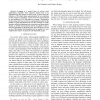Free Online Productivity Tools
i2Speak
i2Symbol
i2OCR
iTex2Img
iWeb2Print
iWeb2Shot
i2Type
iPdf2Split
iPdf2Merge
i2Bopomofo
i2Arabic
i2Style
i2Image
i2PDF
iLatex2Rtf
Sci2ools
IROS
2008
IEEE
2008
IEEE
Selection of robot pre-grasps using box-based shape approximation
— Grasping is a central issue of various robot applications, especially when unknown objects have to be manipulated by the system. In earlier work, we have shown the efficiency of 3D object shape approximation by box primitives for the purpose of grasping. A point cloud was approximated by box primitives [1]. In this paper, we present a continuation of these ideas and focus on the box representation itself. On the number of grasp hypotheses from box face normals, we apply heuristic selection integrating task, orientation and shape issues. Finally, an off-line trained neural network is applied to chose a final best hypothesis as the final grasp. We motivate how boxes as one of the simplest representations can be applied in a more sophisticated manner to generate task-dependent grasps.
| Added | 31 May 2010 |
| Updated | 31 May 2010 |
| Type | Conference |
| Year | 2008 |
| Where | IROS |
| Authors | Kai Huebner, Danica Kragic |
Comments (0)

